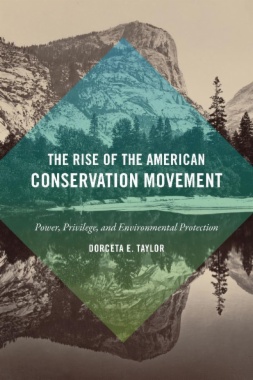In this sweeping social history Dorceta E. Taylor examines the emergence and rise of the multifaceted U.S. conservation movement from the mid-nineteenth to the early twentieth century. She shows how race, class, and gender influenced every aspect of the movement, including the establishment of parks; campaigns to protect wild game, birds, and fish; forest conservation; outdoor recreation; and the movement's links to nineteenth-century ideologies. Initially led by white urban elites—whose early efforts discriminated against the lower class and were often tied up with slavery and the appropriation of Native lands—the movement benefited from contributions to policy making, knowledge about the environment, and activism by the poor and working class, people of color, women, and Native Americans. Far-ranging and nuanced, The Rise of the American Conservation Movement comprehensively documents the movement's competing motivations, conflicts, problematic practices, and achievements in new ways.
- Cover
- Contents
- Acknowledgments
- Introduction
- Part I: The Impetus for Change
- 1. Key Concepts Informing Early Conservation Thought
- 2. Wealthy People and the City: An Ambivalent Relationship
- Part II: Manliness, Womanhood, Wealth, and Sport
- 3. Wealth, Manliness, and Exploring the Outdoors: Racial and Gender Dynamics
- 4. Wealth, Women, and Outdoor Pursuits
- 5. People of Color: Access to and Control of Resources
- Part III: Wildlife Protection
- 6. Sport Hunting, Scarcity, and Wildlife Protection
- 7. Blaming Women, Immigrants, and Minorities for Bird Destruction
- 8. Challenging Wildlife Regulations and Understanding the Business-Conservation Connections
- Part IV: Gender, Wealth, and Forest Conservation
- 9. Rural Beautification and Forest Conservation: Gender, Class, and Corporate Dynamics
- 10. Preservation, Conservation, and Business Interests Collide
- 11. National Park Preservation, Racism, and Business Relations
- 12. Nation Building, Racial Exclusion, and the Social Construction of Wildlands
- Conclusion
- Notes
- References
- Index
- A
- B
- C
- D
- E
- F
- G
- H
- I
- J
- K
- L
- M
- N
- O
- P
- Q
- R
- S
- T
- U
- V
- W
- Y
- Z

